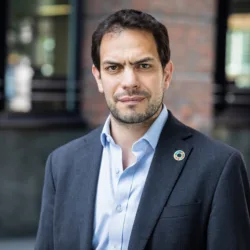How to make a brains trust for a building
作者

Annie Nguyen
查看个人简介There has been a lot of talk about digital twins of buildings, but behind the mystique are some very pragmatic and practical applications of technology that make a building operate more efficiently and improve the experience of occupants.
Basically, a digital twin is a digital version of a building that includes all the building systems and structural elements a Facilities Manager might need to know. It is primarily a way of making detailed information functional and useful, so things like energy use, temperature and humidity can be monitored and managed.
What actually needs to be in the twin very much depends on the type of building it is and the end use the asset owner has in mind. For example, in a manufacturing plant the digital twin can incorporate processes for monitoring and reporting on batch start and end times, any automated quality control processes, rooftop PV power generation, and monitoring of critical systems for any faults.
In a premium office tower, it can include data around the occupancy of space, vertical transportation use, indoor air quality, indoor temperatures and security as well as all the base building mechanical systems, electrical, hydraulics and fire safety systems.
The most important part of the process of building the digital twin is getting the parameters right. What does it need to do, and who does it need to do it for? Conceivably we could put sensors on everything, but do we need them? Who would benefit, for example, from having sensors that detect how fast people walk down a corridor? It’s useful to know how many people walk down it when, potentially, but do we need data on how fast they do so? Possibly not.
We are not aiming to collect information and data for the sake of it, but for a purpose. In a similar way, in a smart building we install sensors or display screens and monitors where they will improve building function, assist predictive maintenance, or benefit the user experience and understanding of the building. Our Building Digital Consultancy takes a very strategic approach. It’s useful to have an LED panel that shows energy use and solar PV generation as part of informing and educating occupants, but they probably don’t need to be in every room!
It’s valuable to have sensors on moving parts in the building ventilation system to monitor airflow, air temperature and detect the vibrations that might indicate a part is wearing out or requires maintenance, but we may not need sensors that tell us if the blinds are lowered or not on every window in an open plan office.
The other vital element is thinking upfront about how data and information will be processed and made available. Smart buildings with all their various sensors can generate massive streams of data – but most FMs do not have time to dive into a river of data and look for the bits that actually matter.
A digital platform that captures and integrates the data and converts it into useable analytics and dashboards is required. It is for this reason we always suggest building controls, BMS systems and other individual parts of the building digital nervous system use open protocols, so they can be seamlessly integrated into the central brain or digital platform.
The most effective digital twin is not about mirroring every aspect of the building in data and model form – it is the cyber representation of everything that makes the building work for the people who own, operate and occupy it.





